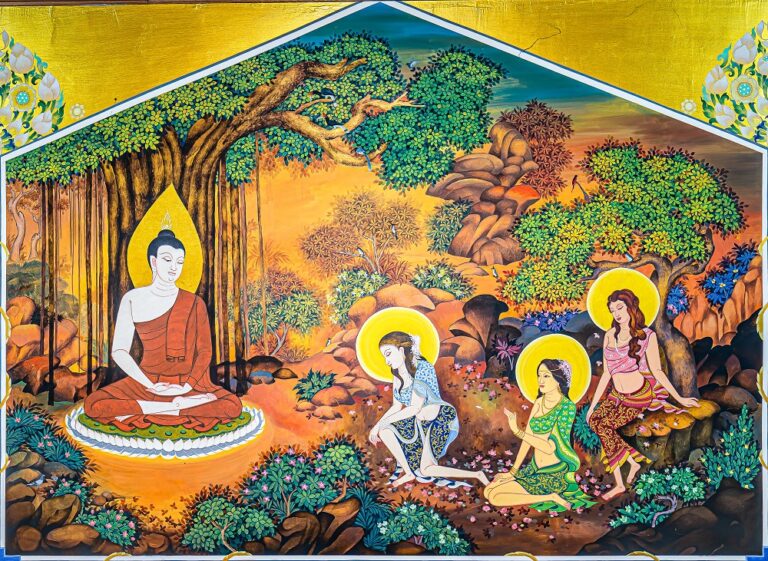
THE THREE DAUGHTERS OF MARA
The mural depicts the moment when the Buddha attained enlightenment, surrounded by the alluring daughters of Mara, the Buddhist personification of temptation.
Mara sends his daughters to the Buddha in an attempt to prevent him from achieving enlightenment by tempting him with their beauty, sensual pleasures, and worldly desires.
The three daughters, Tanha, Arati, and Raga, represent the different forms of desire and attachment that can distract one from the path to enlightenment. Tanha represents the desire for wealth, power, and recognition, a jealous thirst that can never be satisfied. Arati represents discontentment, or the habit of our minds dwelling on things we do not like or that make us angry. Finally, Raga represents sensual lust, the most basic distraction from the righteous path.
The daughters do not force the Buddha to do anything, but they attempt to trap his mind in the material world of everyday temptations and illusions. The Buddha does not ignore them, but looks kindly upon them with a mindful gaze. He is not turned from the path to Enlightenment.
The mural serves as a powerful reminder of the importance of staying true to our spiritual aspirations and not succumbing to the temptations of the world.